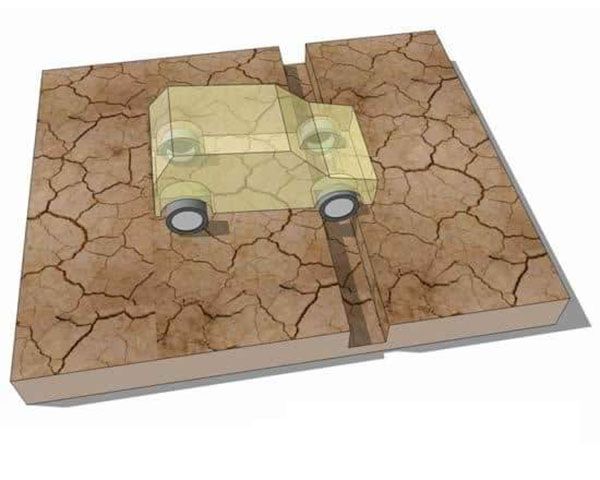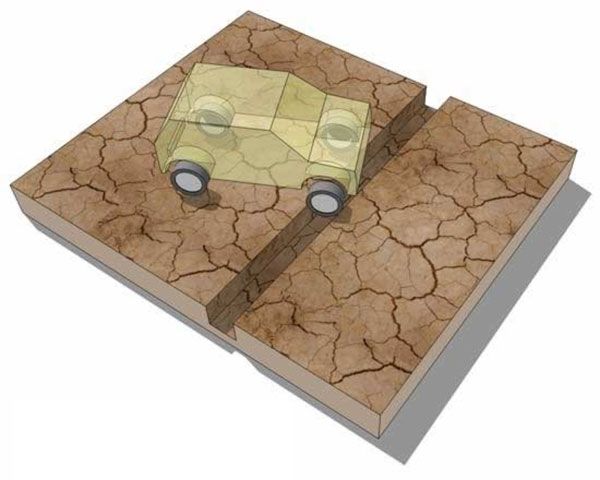Driving over a Ditch
Ditch crossing
4x4 OffRoad Driving
Ditch crossings can be quite hard on your car unless the correct technique is used. There is a risk of contact with the ground, and loss of traction is fairly likely depending on the size of the ditch.
If your angle is wrong, two
tires may enter the ditch at the same
time, which could cause you to get
stuck. Drive carefully.
Direct approaches could result in
hitting the bumper or underguard
against edge of the ditch. The
angled approach increases clearance.
The angled approach also
forces tires into the ditch one by
one, reducing the impact to the
body. It is important at this time
that at least three of the tires
maintain traction. Be sure to use
full-time 4WD with center differential
activated when driving in
these conditions.
Driving speed and acceleration
Slowly enter one tire at a time into the ditch/gap. Then, accelerate a little until the tire starts to pass the lip and decelerate right after the tire clears the ditch. Repeat this process for all four tires. On a slippery surface, increase or decrease speed as needed.
Mitigate depth or slope
When the depth or the angle is too great, adjustments could be made by placing a rock or other object where the tires hit.
Rules of thumb
-
High / Low Range:Low
-
Gears:1st Low Gear
-
Diff lock(s):Engage
-
Speed:Engine tick over (unless there is a risk of stalling)
-
Note:Cross at an angle, not straight
What not to do
Crossing a ditch straight will cause both front wheels to fall into the depression simultaneously and for the front suspension to compress. This can cause the front of the vehicle to make contact with the ground, or reduce traction to the point where you might become stuck.
The correct ditch crossing technique
To negotiate a ditch in a more reliable manner, cross at an angle, allowing only one wheel to enter the ditch at a time. This provides the greatest chance of success by maintaining the best possible traction using three out of the four wheels. Ensure all the traction aids at your disposal are engaged (such as traction control and differential lock). Tackle the ditch at a slow speed, but have sufficient momentum to drive the vehicle through. If you have the luxury of adjustable suspension, ensure the highest setting is selected to prevent any contact with the ground. Be prepared to increase the throttle slightly if wheels start to spin.

Ditch crossing – straight



